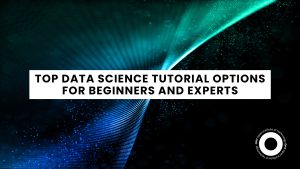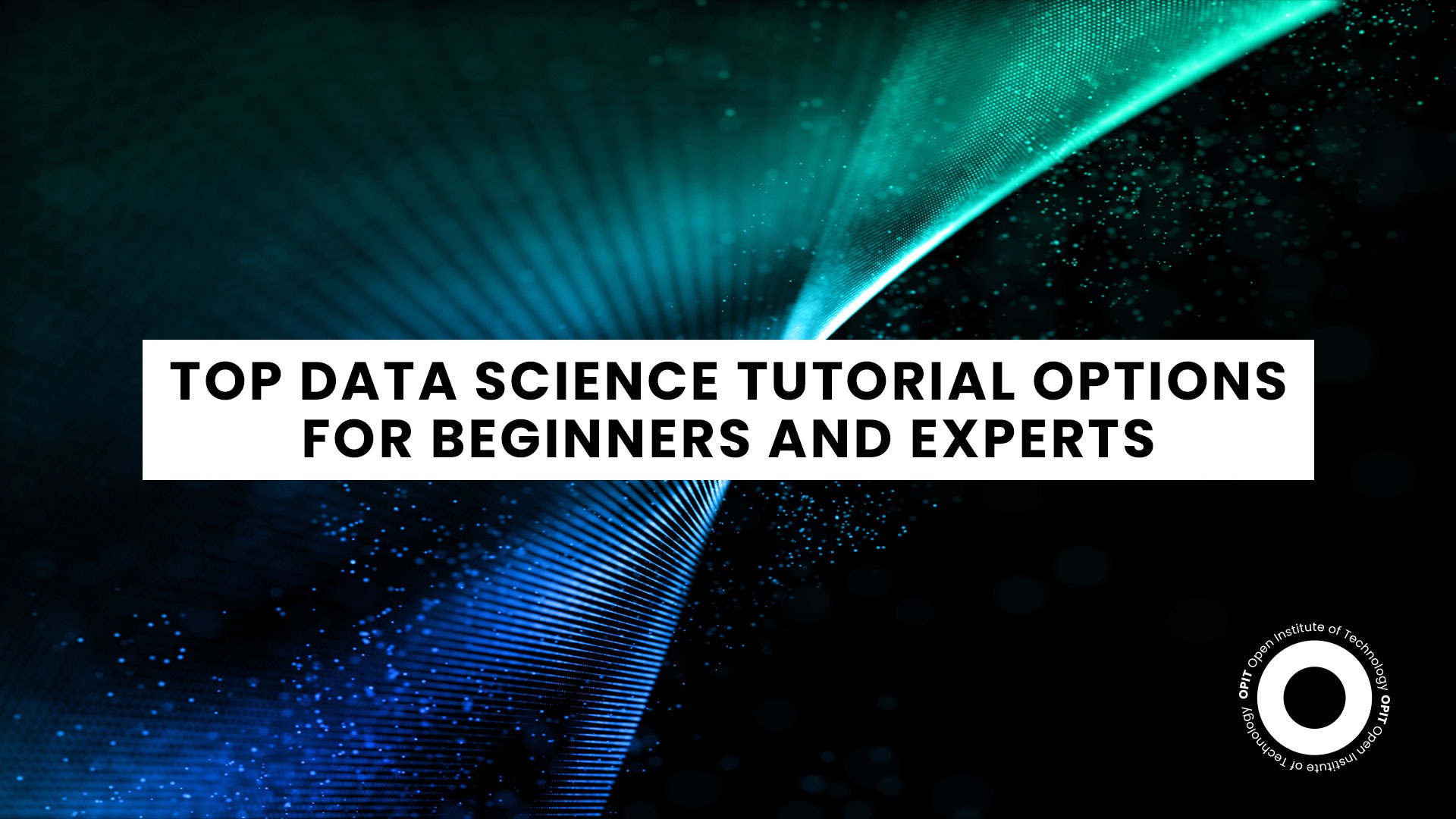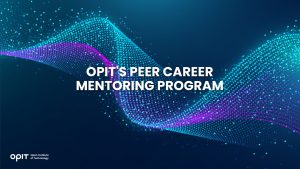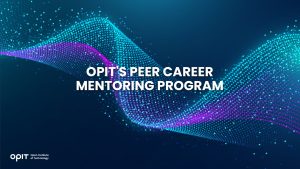

Imagine that you own a business that has thousands of customers. You have data on every one of these customers, ranging from basic contact information to data about their purchasing habits. What you have is a huge dataset, and you want to extract information from that dataset in the form of patterns and insights with which you can make decisions.
You’d need a data scientist.
Data scientists specialize in shining a spotlight on the most important insights found in large datasets. They use a range of tools – from complex algorithms to artificial intelligence – to make that spotlight shine brighter. And in a world of Big Data, the data scientist’s role is more important now than ever. With these six courses, split between beginner, intermediate, and advanced levels, you put yourself in a prime position to become the data scientist that so many companies need.
Best Data Science Tutorials for Beginners
Everybody has to start somewhere, and these data science beginner tutorial options are the ideal first step on your journey into the field.
Data Science Tutorial for Beginners (Java T Point)
If you’re looking for a succinct explanation of what data science is, what it involves, and how it applies in the modern world, Java T Point’s tutorial answers the key questions. It’s structured as a long-form article rather than a set of modules or lessons, but it’s well-organized and covers all of the key points in enough depth to make it a handy primer for the data science novice.
This data science tutorial covers a range of topics, from basic explanations of the components of data science to descriptions of the types of jobs available for those who enter the field. It also digs into some of the machine learning aspects of data science, such as decision trees, so you can see how AI ties into modern data science practices.
Granted, the fact that it’s not a traditional course means there’s no community underpinning the tutorial or certification for completion. But as a primer that gives you some foundational knowledge, it’s a superb starting point.
Data Science Full Course – Learn Data Science in 10 Hours (Edureka)
Offered via YouTube, this data science tutorial makes the lofty claim of being able to teach you all you need to know about the subject in 10 hours. While that isn’t strictly true (the more complex aspects are covered superficially), it’s still a great primer for those looking to build a solid foundation in the subject.
The tutorial is a great choice for visual learners, and it covers topics like data categorization, statistics, and the data lifecycle. Charts, graphs, and other visual learning tools abound, with the constant narration helping you to understand what you’re seeing on screen.
As a full 10-hour video, the tutorial could do with being broken up into separate lessons to make it easier to keep your place. But as long as you’re happy to record time stamps (or don’t mind the full 10 hours in one sitting), the course delivers plenty of useful information.
Best Data Science Tutorials for Intermediate Learners
After completing a few of the best data science tutorials for beginners, you’re ready to get your feet wet with intermediate courses that dig into the coding that underpins data science.
Data Science with Python Tutorial (Geeksforgeeks)
Python is the programming language of choice for data scientists, as evidenced by the fact that 69% of data scientists report using Python daily. It’s no surprise, either, as Python is an extremely flexible language that’s ideal for creating the algorithms needed in data science due to its vast range of libraries. The challenge you face is twofold – figuring out how to code in Python and understanding what libraries you need to confront common data science challenges.
Geeksforgeeks offers a data science tutorial that confronts both of those challenges and helps you see how Python applies to the data science field in a practical sense. Starting with a brief introduction to the data science field (the beginner-level tutorials in this list offer more depth), it then dives into everything you need to know about Python. You’ll learn about the basics of Python, such as functions and control statements, before moving into how you can use the language for visualizing data and creating machine learning models.
It’s a highly specialized tutorial, though it’s one that’s essential for prospective data scientists, given the popularity of Python in the field. Unfortunately, there’s no certification for completion. However, it’ll equip you with so much Python knowledge that you can feel confident moving into a more advanced study without worrying about your coding chops.
Data Science and Machine Learning Essentials (Microsoft via Udemy)
Like the above course, Microsoft’s offering covers Python, albeit in far less depth. However, it stands out because it also covers a couple of other languages used commonly in data science – namely R and Azure Machine Learning. As a result, the course is an excellent choice for intermediate data scientists who want to get to grips with the main three programming languages they’ll likely use in the field.
It’s a five-week course, with Microsoft recommending between three and four hours of learning per week, and it’s delivered in English. Each weekly module is capped with a quiz that tests your knowledge. The modules cover everything from data science basics to creating machine learning models in Azure Machine Learning.
Of course, the biggest benefit of this course (aside from the content) is the Microsoft-approved certification you get at the end. Any employer who sees Microsoft on your CV will sit up and take notice. Still, you’ll need to build on what you learn here with a more advanced data science tutorial, ideally one that covers more real-world applications of working with data.
Best Data Science Tutorials for Advanced Learners
Once you’re secure in your foundational knowledge and you have a good idea of how to apply data science practices, you’re ready to step into a more advanced data science tutorial. Here are two options.
Data Science Tutorial – Learn Data Science From Scratch (DataFlair)
Think of DataFlair’s main data science tutorial page as a hub world in a video game. There are dozens of different directions in which to take your studying, and you’re in complete control of where you go and what you learn. The page hosts over 370 tutorials (free of charge) that cover everything from the basics of data science to using data mining and Python to parse through massive data sets.
The sheer depth of coverage makes this set of tutorials ideal for the advanced learner. The more basic sides of the course can fill in any knowledge gaps that weren’t covered in previous tutorials you’ve taken. And on the more advanced side, you’ll be exposed to real-world examples that show you how to apply your theoretical knowledge in a practical environment. There’s even a set of quizzes that you can use to test your understanding of what you read.
There are some drawbacks, namely that this data science tutorial doesn’t offer a certificate and is less interactive than many paid courses. However, self-paced learners who thrive when presented with pages of theoretical knowledge will find almost everything they need to know about data science in this collection.
MicroMasters® Program in Statistics and Data Science (Massachusetts Institute of Technology)
By the time you’re at the advanced stage of learning data science, you’ll probably want an official certification to take pride of place on your CV. This mini-Master’s degree comes from the Massachusetts Institute of Technology (MIT), which is one of the world’s leading technology and engineering schools.
The course lasts for one year and two months, with between 10 and 14 hours of study required per week, making it a choice only for those who can commit to a part-time consistent learning schedule. It’s also not a free data science tutorial, as you’ll have to pay £1,210 (approx. €1,401) for the program.
If you can vault those hurdles, you get a graduate-level course that teaches you how to develop the machine learning models used in modern data science. Plus, having the letters “MIT” on your course certification (and the networking opportunities that come with learning from some of the institutions leading professors) makes this course even more valuable.
Find the Best Data Science Tutorials for Your Skill Level
Whether you’re taking your first tentative steps into the world of data science or you’re an advanced learner looking to brush up your skills, there’s a data science tutorial out there for you. The six highlighted in this article represent the best data science tutorials available (two for each skill level) on the web.
Let’s close by answering a key question – why complete one of these tutorials?
Precedence Research has the answer, stating that the data science field will enjoy a compound annual growth rate (CAGR) of 16.43% between 2022 and 2030. Rapid growth means more job opportunities (and higher salaries) for those with data science skills. Use these tutorials to build your skill base before shifting your career focus to a field that looks set to explode as Big Data becomes more crucial to how companies operate.
Related posts

Source:
- Raconteur, published on November 06th, 2025
Many firms have conducted successful Artificial Intelligence (AI) pilot projects, but scaling them across departments and workflows remains a challenge. Inference costs, data silos, talent gaps and poor alignment with business strategy are just some of the issues that leave organisations trapped in pilot purgatory. This inability to scale successful experiments means AI’s potential for improving enterprise efficiency, decision-making and innovation isn’t fully realised. So what’s the solution?
Although it’s not a magic bullet, an AI operating model is really the foundation for scaling pilot projects up to enterprise-wide deployments. Essentially it’s a structured framework that defines how the organisation develops, deploys and governs AI. By bringing together infrastructure, data, people, and governance in a flexible and secure way, it ensures that AI delivers value at scale while remaining ethical and compliant.
“A successful AI proof-of-concept is like building a single race car that can go fast,” says Professor Yu Xiong, chair of business analytics at the UK-based Surrey Business School. “An efficient AI technology operations model, however, is the entire system – the processes, tools, and team structures – for continuously manufacturing, maintaining, and safely operating an entire fleet of cars.”
But while the importance of this framework is clear, how should enterprises establish and embed it?
“It begins with a clear strategy that defines objectives, desired outcomes, and measurable success criteria, such as model performance, bias detection, and regulatory compliance metrics,” says Professor Azadeh Haratiannezhadi, co-founder of generative AI company Taktify and professor of generative AI in cybersecurity at OPIT – the Open Institute of Technology.
Platforms, tools and MLOps pipelines that enable models to be deployed, monitored and scaled in a safe and efficient way are also essential in practical terms.
“Tools and infrastructure must also be selected with transparency, cost, and governance in mind,” says Efrain Ruh, continental chief technology officer for Europe at Digitate. “Crucially, organisations need to continuously monitor the evolving AI landscape and adapt their models to new capabilities and market offerings.”
An open approach
The most effective AI operating models are also founded on openness, interoperability and modularity. Open source platforms and tools provide greater control over data, deployment environments and costs, for example. These characteristics can help enterprises to avoid vendor lock-in, successfully align AI to business culture and values, and embed it safely into cross-department workflows.
“Modularity and platformisation…avoids building isolated ‘silos’ for each project,” explains professor Xiong. “Instead, it provides a shared, reusable ‘AI platform’ that integrates toolchains for data preparation, model training, deployment, monitoring, and retraining. This drastically improves efficiency and reduces the cost of redundant work.”
A strong data strategy is equally vital for ensuring high-quality performance and reducing bias. Ideally, the AI operating model should be cloud and LLM agnostic too.
“This allows organisations to coordinate and orchestrate AI agents from various sources, whether that’s internal or 3rd party,” says Babak Hodjat, global chief technology officer of AI at Cognizant. “The interoperability also means businesses can adopt an agile iterative process for AI projects that is guided by measuring efficiency, productivity, and quality gains, while guaranteeing trust and safety are built into all elements of design and implementation.”
A robust AI operating model should feature clear objectives for compliance, security and data privacy, as well as accountability structures. Richard Corbridge, chief information officer of Segro, advises organisations to: “Start small with well-scoped pilots that solve real pain points, then bake in repeatable patterns, data contracts, test harnesses, explainability checks and rollback plans, so learning can be scaled without multiplying risk. If you don’t codify how models are approved, deployed, monitored and retired, you won’t get past pilot purgatory.”
Of course, technology alone can’t drive successful AI adoption at scale: the right skills and culture are also essential for embedding AI across the enterprise.
“Multidisciplinary teams that combine technical expertise in AI, security, and governance with deep business knowledge create a foundation for sustainable adoption,” says Professor Haratiannezhadi. “Ongoing training ensures staff acquire advanced AI skills while understanding associated risks and responsibilities.”
Ultimately, an AI operating model is the playbook that enables an enterprise to use AI responsibly and effectively at scale. By drawing together governance, technological infrastructure, cultural change and open collaboration, it supports the shift from isolated experiments to the kind of sustainable AI capability that can drive competitive advantage.
In other words, it’s the foundation for turning ambition into reality, and finally escaping pilot purgatory for good.

The Open Institute of Technology (OPIT) is the perfect place for those looking to master the core skills and gain the fundamental knowledge they need to enter the exciting and dynamic environment of the tech industry. While OPIT’s various degrees and courses unlock the doors to numerous careers, students may not know exactly which line of work they wish to enter, or how, exactly, to take the next steps.
That’s why, as well as providing exceptional online education in fields like Responsible AI, Computer Science, and Digital Business, OPIT also offers an array of career-related services, like the Peer Career Mentoring Program. Designed to provide the expert advice and support students need, this program helps students and alumni gain inspiration and insight to map out their future careers.
Introducing the OPIT Peer Career Mentoring Program
As the name implies, OPIT’s Peer Career Mentoring Program is about connecting students and alumni with experienced peers to provide insights, guidance, and mentorship and support their next steps on both a personal and professional level.
It provides a highly supportive and empowering space in which current and former learners can receive career-related advice and guidance, harnessing the rich and varied experiences of the OPIT community to accelerate growth and development.
Meet the Mentors
Plenty of experienced, expert mentors have already signed up to play their part in the Peer Career Mentoring Program at OPIT. They include managers, analysts, researchers, and more, all ready and eager to share the benefits of their experience and their unique perspectives on the tech industry, careers in tech, and the educational experience at OPIT.
Examples include:
- Marco Lorenzi: Having graduated from the MSc in Applied Data Science and AI program at OPIT, Marco has since progressed to a role as a Prompt Engineer at RWS Group and is passionate about supporting younger learners as they take their first steps into the workforce or seek career evolution.
- Antonio Amendolagine: Antonio graduated from the OPIT MSc in Applied Data Science and AI and currently works as a Product Marketing and CRM Manager with MER MEC SpA, focusing on international B2B businesses. Like other mentors in the program, he enjoys helping students feel more confident about achieving their future aims.
- Asya Mantovani: Asya took the MSc in Responsible AI program at OPIT before taking the next steps in her career as a Software Engineer with Accenture, one of the largest IT companies in the world, and a trusted partner of the institute. With a firm belief in knowledge-sharing and mutual support, she’s eager to help students progress and succeed.
The Value of the Peer Mentoring Program
The OPIT Peer Career Mentoring Program is an invaluable source of support, inspiration, motivation, and guidance for the many students and graduates of OPIT who feel the need for a helping hand or guiding light to help them find the way or make the right decisions moving forward. It’s a program built around the sharing of wisdom, skills, and insights, designed to empower all who take part.
Every student is different. Some have very clear, fixed, and firm objectives in mind for their futures. Others may have a slightly more vague outline of where they want to go and what they want to do. Others live more in the moment, focusing purely on the here and now, but not thinking too far ahead. All of these different types of people may need guidance and support from time to time, and peer mentoring provides that.
This program is also just one of many ways in which OPIT bridges the gaps between learners around the world, creating a whole community of students and educators, linked together by their shared passions for technology and development. So, even though you may study remotely at OPIT, you never need to feel alone or isolated from your peers.
Additional Career Services Offered by OPIT
The Peer Career Mentoring Program is just one part of the larger array of career services that students enjoy at the Open Institute of Technology.
- Career Coaching and Support: Students can schedule one-to-one sessions with the institute’s experts to receive insightful feedback, flexibly customized to their exact needs and situation. They can request resume audits, hone their interview skills, and develop action plans for the future, all with the help of experienced, expert coaches.
- Resource Hub: Maybe you need help differentiating between various career paths, or seeing where your degree might take you. Or you need a bit of assistance in handling the challenges of the job-hunting process. Either way, the OPIT Resource Hub contains the in-depth guides you need to get ahead and gain practical skills to confidently move forward.
- Career Events: Regularly, OPIT hosts online career event sessions with industry experts and leaders as guest speakers about the topics that most interest today’s tech students and graduates. You can join workshops to sharpen your skills and become a better prospect in the job market, or just listen to the lessons and insights of the pros.
- Internship Opportunities: There are few better ways to begin your professional journey than an internship at a top-tier company. OPIT unlocks the doors to numerous internship roles with trusted institute partners, as well as additional professional and project opportunities where you can get hands-on work experience at a high level.
In addition to the above, OPIT also teams up with an array of leading organizations around the world, including some of the biggest names, including AWS, Accenture, and Hype. Through this network of trust, OPIT facilitates students’ steps into the world of work.
Start Your Study Journey Today
As well as the Peer Career Mentoring Program, OPIT provides numerous other exciting advantages for those who enroll, including progressive assessments, round-the-clock support, affordable rates, and a team of international professors from top universities with real-world experience in technology. In short, it’s the perfect place to push forward and get the knowledge you need to succeed.
So, if you’re eager to become a tech leader of tomorrow, learn more about OPIT today.
Have questions?
Visit our FAQ page or get in touch with us!
Write us at +39 335 576 0263
Get in touch at hello@opit.com
Talk to one of our Study Advisors
We are international
We can speak in:


